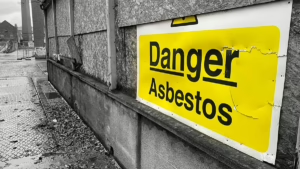Jessica Guistolise is an Evangelist for Lucid Software
I spend most of my waking time evangelizing about the power of work accelerated. It’s about helping teams to align, adapt and move forward as a team.
Under the wrong leadership, however, attempts to accelerate work could quickly turn sour. The best teams collaborate when they have a shared purpose, are aligned on the way decisions are made and use this process to reach consensus about the actions that will move the business forward.
Leaders often ignore these important steps to build cohesion. In the end, they break things by trying to move too fast.
It is a serious human cost for team members. Misalignment Burnout is the most common manifestation – people become disengaged from their work due to a loss of purpose. They fail to meet targets, produce lower-quality work and spiral into rework cycle – deviating from the original intention of accelerating their work.
Let’s look at how teams can work faster the right way.
This is indicative of a larger issue: people don’t burn out because they do too much work, but rather because they don’t know why. Motivation begins to diminish when you don’t have a clear picture of the big picture.
This problem is unfortunately only getting worse. In our recent Work Acceleration Survey, we found that the number of respondents who consider team misalignment a challenge to project workflow has increased from 37% in 2020 to 44% in 2019. More telling is that 37% of managers say they are not confident their teams will achieve their goals. This is up from just 21% six month ago. These signals are a clear indication that the teams do not have a common purpose, strategy or execution.
The conversation must shift if businesses are serious about achieving sustainable performance. It’s time for a rethink of how we align our teams, define goals and give work meaning.
Prioritise coherence and clarity
There are too many siloed teams, and this results in a lack of clarity about what success looks like in a project or an initiative. When people don’t agree on expectations, deliverables or how their work relates to larger business objectives, confusion can turn into disconnection.
In order to close this gap, businesses are now holding more frequent meetings in an effort to keep everyone on the same page. This does not seem to solve the problem. According to 41% of UK employees, it can take as long as three hours to come to a consensus about the work that needs to be completed. More worrying, over a quarter (37%) of workers leave meetings with no clear idea of what they should do next. This is not only operational inefficiency, but a sign that structural alignment has broken down.
Organisations need to rethink the way work is coordinated, communicated and linked to purpose in order to correct course. Clarity is a priority for leaders, as aligned teams move forward faster. It is far more meaningful.
Clarity is essential to success as work becomes more complex. The most important things are alignment on goals, transparency in development timelines and a common understanding of the way goals will be reached. It is important to go beyond this — every member of the team must fully understand the purpose of their work, their role in it, and the value of their contribution to the overall goals of an organization.
I love sports movies. In sports classics such as Remember the Titans and Cool Runnings the team members come from diverse backgrounds, but they rally together under a common goal: to beat the Soviets at hockey. Win the state championship in football. Bobsledding is a qualification for the Olympics.
It’s for this reason that teams should have a common “north star” to keep everyone focused on their purpose and in alignment with action. When people know not only what is needed, but also why, they are empowered to take decisions more quickly, collaborate better, and reduce cognitive overload, which leads to stress.
We need to go beyond simple fixes, such as adding more dashboards or notifications to the work applications of teams. What teams need are solutions that provide context-rich, centralised information, which integrate seamlessly with how they work. These solutions should also foster visibility, improve alignment and facilitate execution. Teams move confidently when strategy is clear at all levels.
No purpose, no progress
Burnout is not just feeling overworked. It’s also a sign of misalignment. It’s now time to stop treating alignment as an extra, but rather as the baseline. Leaders can reconnect their teams by aligning with purpose, setting shared goals, increasing visibility, and improving communication.
The original version of this article Maximise alignment to minimise burnout appeared first on Human Resources News.



